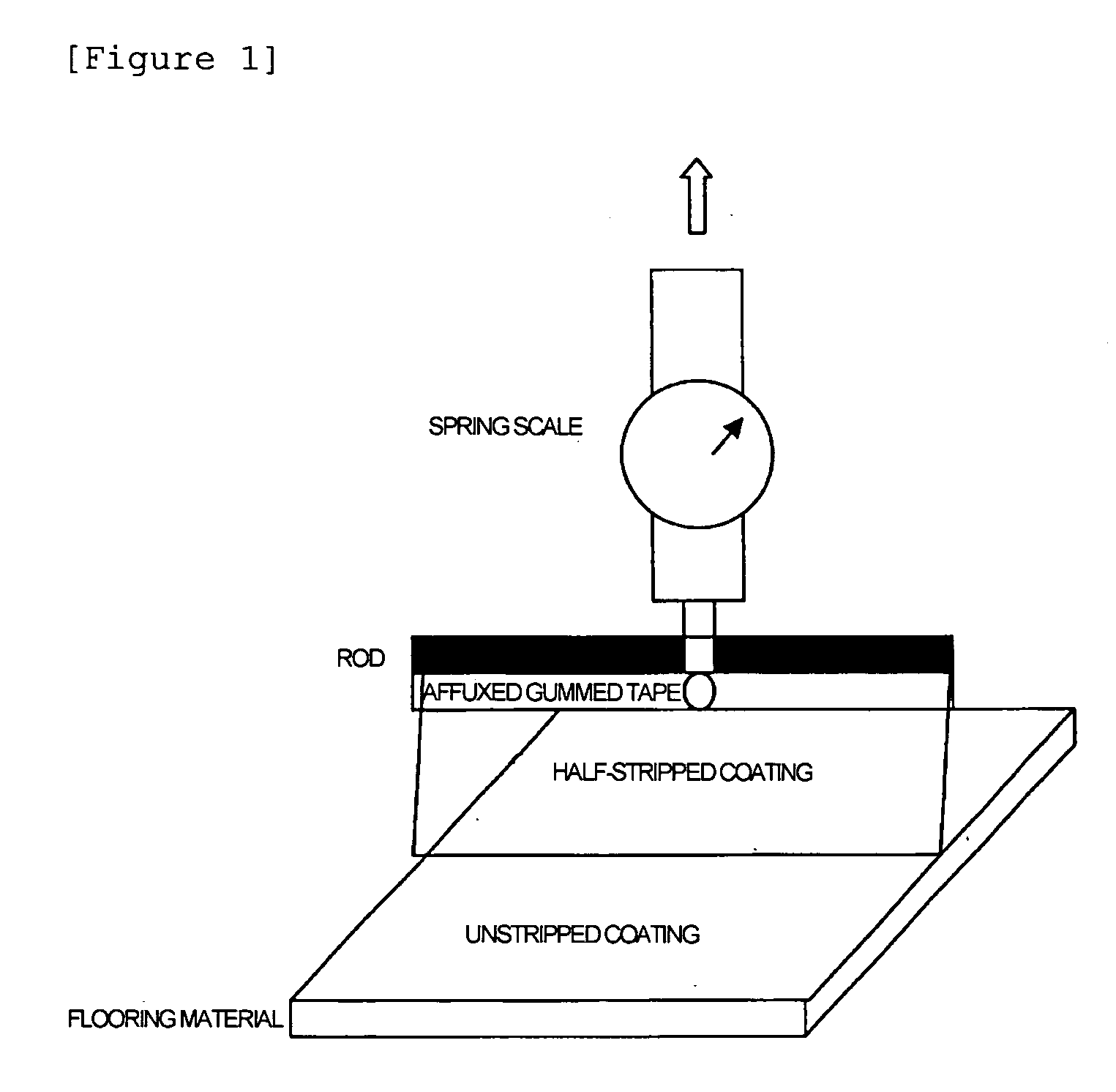Strippable Floor Coating and Method of Forming the Coating
a strippable floor and coating technology, applied in the direction of aqueous dispersions, synthetic resin layered products, polishing compositions, etc., can solve the problems of affecting the working environment, deterioration of construction materials, and affecting the soiling resistance of floors, etc., to achieve beautiful appearance of floors, easy stripping, and excellent soiling resistance
- Summary
- Abstract
- Description
- Claims
- Application Information
AI Technical Summary
Benefits of technology
Problems solved by technology
Method used
Image
Examples
examples
[Undercoat Layer (A)] (Undercoating Agents 1 to 11: Examples, Undercoating Agents 12 to 16: Comparative Examples)
[0062]Undercoating Agent 1: Oxidized polyolefin (supplied from Eastman Kodak Company under the trade name of “Epolene E-10”, having an acid number of 15 and a number-average molecular weight of 1700)
[0063]In a 100-ml stainless steel beaker were placed “Epolene E-10” and a polyoxyethylene oleyl ether (oxyethylene units (EO): 14), the mixture was melted at 110° C. and combined with purified potassium hydroxide dissolved in a small amount of water. The molten mixture was gradually added to water at 95° C. to 98° C. with stirring. After the completion of addition, the mixture was cooled to room temperature and thereby yielded an emulsified dispersion. The amounts (parts by mass) of the components are as follows:
Epolene E-1050Polyoxyethylene oleyl ether15Purified potassium hydroxide1Water934Total1000
[0064]Undercoating Agent 2: Oxidized polyolefin (supplied from Baker Petrolite...
examples 1 to 44
[Examples 1 to 44], [and Comparative Examples 1 to 18]
[0102]Test flooring materials used were a vinyl composition floor tile (supplied from Tajima, Inc. under the trade name of “P TILE P-1”) according to the standard specified in Japanese Industrial Standards (JIS) A5705, a sheet vinyl flooring (supplied from LONSEAL Corporation under the trade name of “LONLEUM No. 159”) according to the standard specified in JIS A5707, and a composite flooring type 1 (supplied from TOYOTEX Inc. under the trade name of “Seven-Brown 712”) according to the standard specified in the Japanese Agricultural Standards (JAS).
[0103]The combinations of (primer) / (undercoating agent) / (overcoating agent) / (finishing agent) in Tables 1 to 6 were applied to surfaces of these flooring materials.
[0104]A primer was applied according to the procedure in tests for floor-polishes. Specifically, the primer was applied to the surface of a test flooring material with a gauze to an amount of coating of 10±2 ml / m2, dried for ...
PUM
| Property | Measurement | Unit |
|---|---|---|
| Temperature | aaaaa | aaaaa |
| Fraction | aaaaa | aaaaa |
| Adhesion strength | aaaaa | aaaaa |
Abstract
Description
Claims
Application Information
 Login to View More
Login to View More - R&D
- Intellectual Property
- Life Sciences
- Materials
- Tech Scout
- Unparalleled Data Quality
- Higher Quality Content
- 60% Fewer Hallucinations
Browse by: Latest US Patents, China's latest patents, Technical Efficacy Thesaurus, Application Domain, Technology Topic, Popular Technical Reports.
© 2025 PatSnap. All rights reserved.Legal|Privacy policy|Modern Slavery Act Transparency Statement|Sitemap|About US| Contact US: help@patsnap.com

